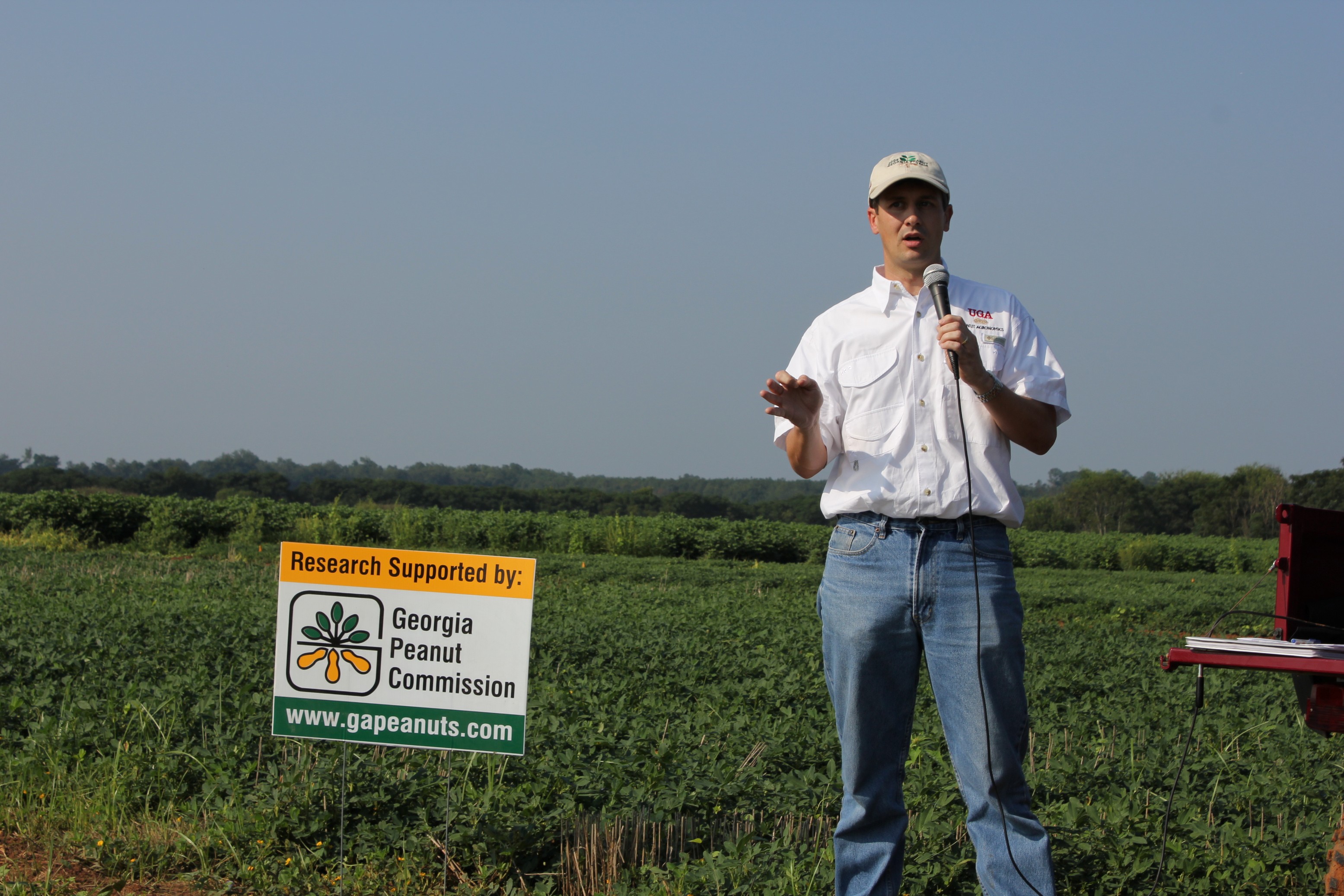
Scott Tubbs, cropping systems agronomist with UGA, discusses his research on rotation and tillage methods.
The Georgia Peanut Tour visited the University of Georgia’s (UGA) Southwest Georgia Research and Education Center which lies in the upper Coastal Plain near Plains, Georgia – the heart of peanut country. The site was selected because of is heavy, red, clay soil that can be difficult to farm but is very productive when carefully managed. The Southwest Georgia Research and Education Center was established in 1951 with 453 acres and has grown to 512 acres with a foundation seed processing unit and a welcome center to highlight former President Jimmy Carter’s hometown for visitors. Research at the center is based on a 240-day growing season and average annual rainfall of 48 inches. This allows field work to be done 10 out of 12 months of the year. Nine full-time employees maintain research for 31 cooperating University of Georgia and U.S. Department of Agriculture researchers. Current research focuses on every major crop in South Georgia including peanuts, cotton, corn, soybeans, grain sorghum, wheat and canola. During the tour, UGA researchers provided updates on peanut breeding, rotation, disease control, and more.
